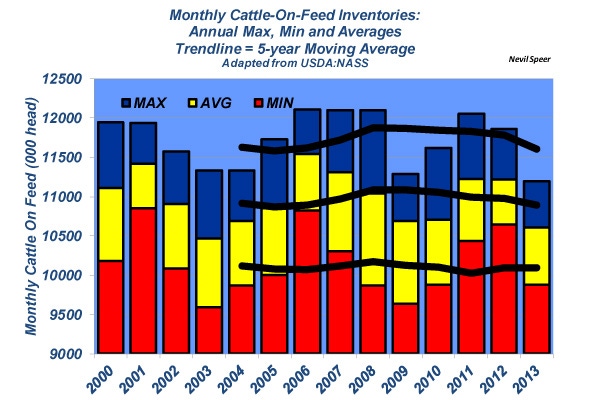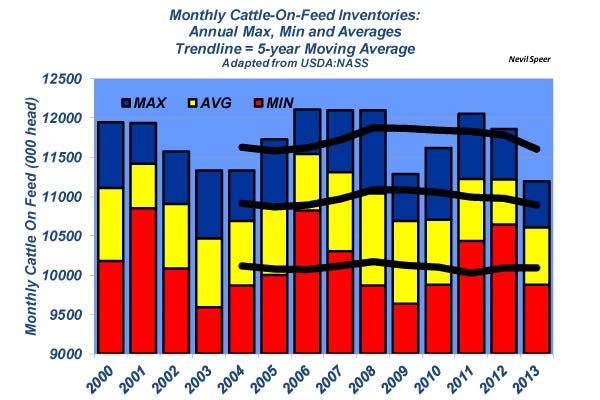Industry At A Glance: Cattle On Feed & Supply Management Trends
Even in the face of declining feeder cattle supply, the U.S. feeding sector has managed to remain relatively consistent in managing flow over the years.
January 2, 2014

USDA’s December Cattle on Feed report marked the second-lowest December inventory (10.725 million head) since the series began in 1996. That’s not surprising, given the enduring cowherd inventory pressure during the past decade coupled with slowing rate of feeder cattle imports. Moreover, feedlot inventory pressure could worsen further if beef producers get serious about heifer retention.
Despite all those indicators, stepping back and looking at cattle feeding inventories from a different perspective reveals an industry that manages to continually be resourceful. That is, trend lines regarding in-out-flow through the feedyard remain relatively flat over time. The graph reveals that the feeding sector, even in the face of declining feeder cattle supply, has managed to remain relatively consistent in managing flow over the years.
Clearly, at some point, such ability may become severely hampered. On the other hand, there’s also evidence that feedyards are getting better and better at supply management – they’re working hard to ensure more consistent occupancy and subsequent throughput.

That development is inherently favorable from a risk management perspective on the production side while also enabling downstream customers a better ability to maintain more steady offerings throughout the year.
Perhaps the graph is a positive indicator of outcomes of the industry’s declining inventory over time. Tight supply has forced the supply chain to become more efficient across segments, and has raised awareness for the importance of improving supply knowledge, management and coordination. That’s likely improved the beef industry’s competitiveness in recent years vs. the more traditional peaks-and-valleys approach when feeder cattle supply was plentiful.
How do you perceive these trends? What do you foresee in terms of coming changes in segment cooperation, and supply management given prospect for even tighter supply in the coming years? How will that change the beef industry’s pricing and marketing going forward. Leave your thoughts below.
You might also like:
15 Best Winter On The Ranch Photos
4 Tips To Cut Your Winter Feeding Bill
Calving Checklist: Everything You Need To Know & Have Before Calving
About the Author(s)
You May Also Like





